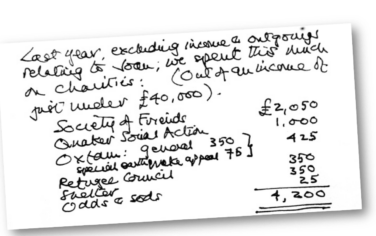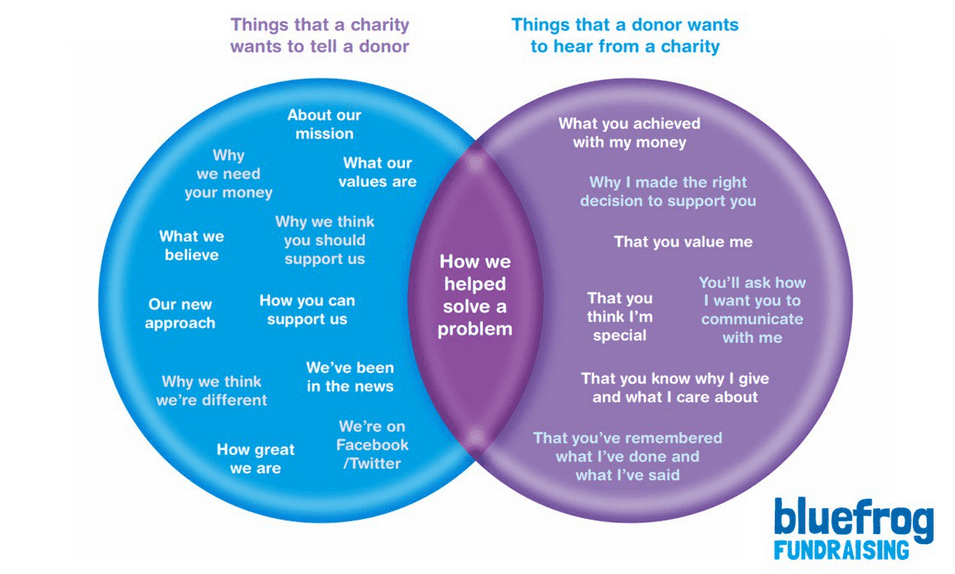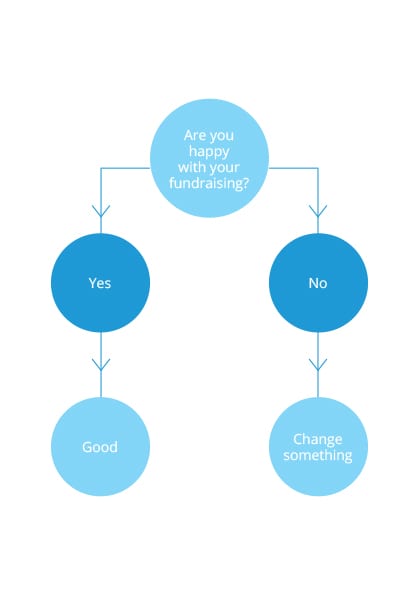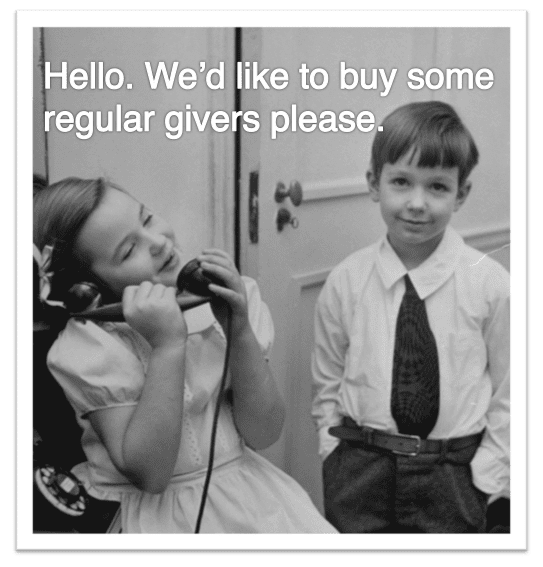A guide to fundraising on the back of a postcard
A few weeks ago, I was reading BARB's 2018's Viewing Report and saw a mention of Harold Pollack, a professor at the University of Chicago.
Back in 2013 he shared his views on personal finance advice, saying:
"[The best personal finance advice] can fit on a 3-by-5 index card, and is available for free in the library."
He soon started to receive emails asking where to find this index card and what was the advice. But the card didn't exist so he proved his point by sketching one out and posting a photo online.
Like personal finance, fundraising is a complex beast. With opposing opinions, ideas and even fashions all fighting for attention, would it be possible to refine the fundamentals down to a handful of points?
Here's my attempt...

To begin, I've taken a leaf from Tim Harford, the author of the piece about the index card in Viewing Report, and kicked off with his first piece of advice.
Observe your feelings.
We have to be constantly aware of what is personally driving us. I've seen many decisions made that reflect an individual fundraiser's motivations rather than being best for donors or beneficiaries. So look out for feelings that could sway you. This could be a desire to copy that 'great new idea', to 'break the mould', to make a name for yourself, or to focus on a specific area of work because you think it is important.
I'm not saying don't test. You must test. But make sure you fully assess an idea before rolling out with a significant investment or introducing a change in strategy.
People give most to causes they care about.
Individuals may well give to a wide range of causes but we can divide them into two broad categories:
- General - charities that focus on social welfare such as poverty alleviation or cruelty prevention.
- Constituency – charities that appeal to people who have a direct association with their work.
People give more (through lifetime and end of life gifts) and have higher levels of loyalty to causes where they have a greater sense of connection. So rather than just recruit anyone as a donor, focus on those who are close to your cause and want to see you succeed.
In any case, you should have a significant proportion of people who care about your work on your database. Consider them before you start recruiting new donors.
Remember that if giving comes from donors who have given out of a sense of duty or obligation – or because they struggle to say no – the resulting gifts can be relatively small and loyalty, much weaker. So when developing a strategy ask the simple question, "who is most likely to respond?" – and no matter what the cause, the answer is never everyone.
I then detail four needs that donors exhibit.
1. People want to achieve something or stop something when they give. And that 'something' should be appropriate to what they can afford.
Asking for very little, such as £3 or $3 a month works for donors who are price sensitive or have little interest in a cause. But it ignores both mid-level donors and connected donors who want to achieve something substantial. For these donors, larger gifts can empower and engage. But obviously get your targeting right - donors who can't afford a larger gift (or who are not interested in a cause) will not appreciate a personal request for a significant sum.
2. Donors want to make a personal difference so we need to help people picture the difference they make possible. We can do this by focusing on the benefit at an individual level. When built with consideration, the shopping list can be very powerful. Photographs, illustrations or building plans can all help create a picture in a donor's mind. But above all, you need to create a central offer that answers the question, 'what is in it for me'? And if you have a deadline, that isn't going to hurt either.
3. Make giving enjoyable. If you can present a route to tackle a problem in a different way, use it (e.g. LendWithCare). But mailing pack after pack that all look virtually the same – thanks to a set of strict visual identity rules – is not going to help your fundraising. Create your appeal from the donor's point of view. Think about what the donor wants to hear where they actually are in their relationship with your charity. And if you are in your twenties or thirties, remember what excites you may leave an eighty year old donor completely nonplussed.
4. People want to be seen as worthwhile members of a worthwhile group. Donors like the sense of association they receive from being part of an important cause. Stickers, badges, greeting cards and tote bags are long-standing techniques to give people the chance to show off about what they care about. But you can drive deeper levels of engagement every time you have a contact point. Take thanking for instance. A hand written thank you card (like you used to send to Great Auntie Jean) delivered through the post will always be received far more enthusiastically than a form printed letter or email. Giving people a secondary action as part of a thanking programme or even asking for an opinion will show that you value your supporters.
Thanking and reporting back
Thanking goes beyond building engagement. When coupled with reporting back, it can prepare and set the scene for people to give again. So make that image in their mind come to life by showing donors what they have made possible. Follow-up appeals that focus on feeding back on a partially completed project can drive significant levels of income that outstrip the original approach.
Talk to your donors
Recognise that you don't know your donors as well as they know themselves. So speak to them! Either to thank them, to update them on a project or even to ask them why they support you. Every phone call will add colour and detail to your personal picture of who gives to you and why. And if you can, dig deeper into their motivators and barriers through a well managed qualitative research study. Every single piece of research I've ever undertaken has always delivered at least one insight that I'd never have considered without the input of people who actually give.
That's it. If you think there are areas I've missed, why not adapt mine or produce your own card and share it here or tweet me at @markyphillips. I'd love to see what you come up with.
PS. It's not my writing. Thanks to Faye for making it legible. And if you wanted a clean copy to download, click here.
Tags In
Related Posts
1 Comment
Comments are closed.
The Essentials

Crack the Code to Regular Giving: Insights, Strategies, and a Special Giveaway!

‘Tis Halloween. Keep to the light and beware the Four Fundraisers of the Apocalypse!

Why do people give? The Donor Participation Project with Louis Diez.

What does the latest research tell us about the state of fundraising?

How do donors manage their philanthropic budgets?










[…] doesn’t it? But the lessons of great fundraising can actually be condensed down to a postcard. A Guide to Fundraising on the Back of a Postcard. Mark […]